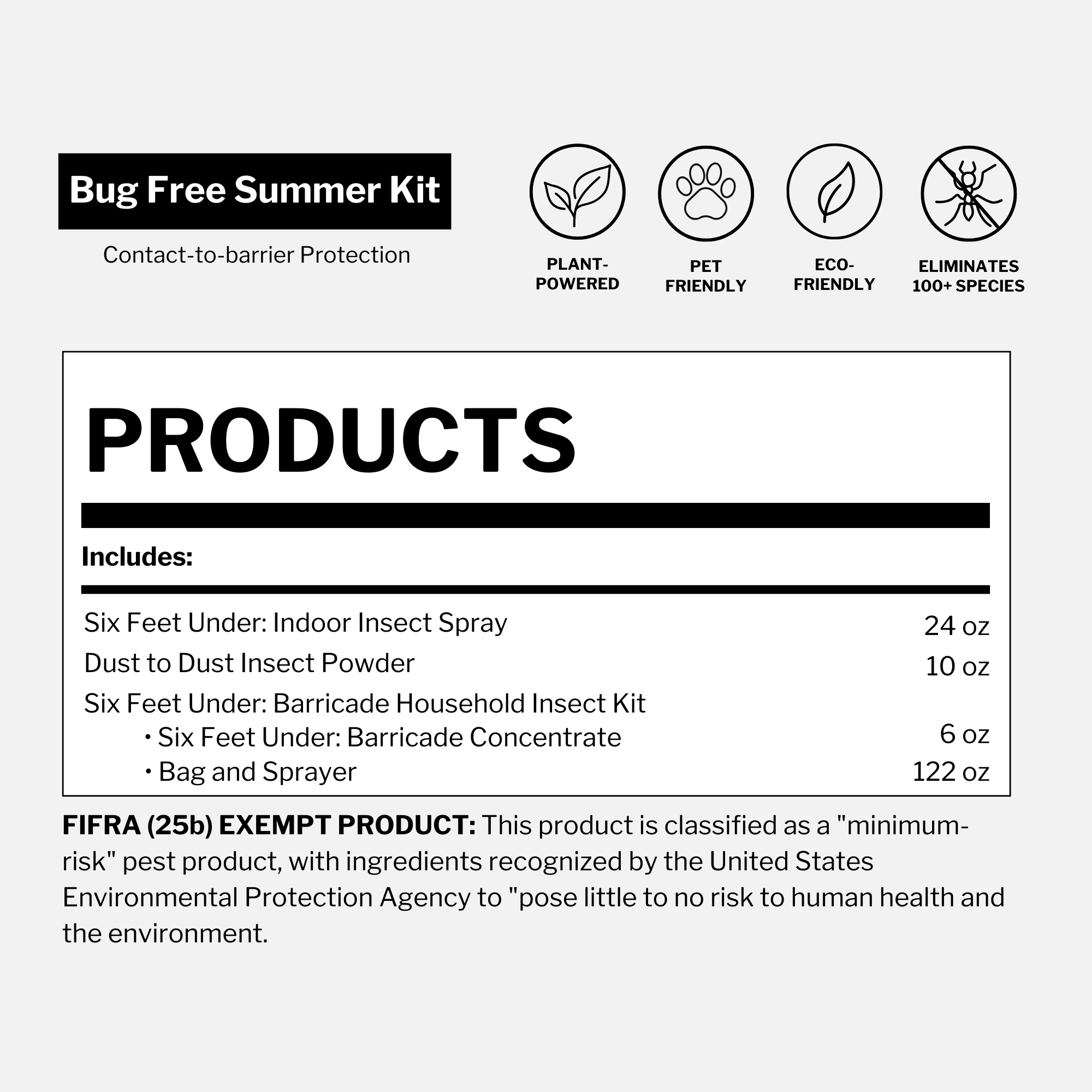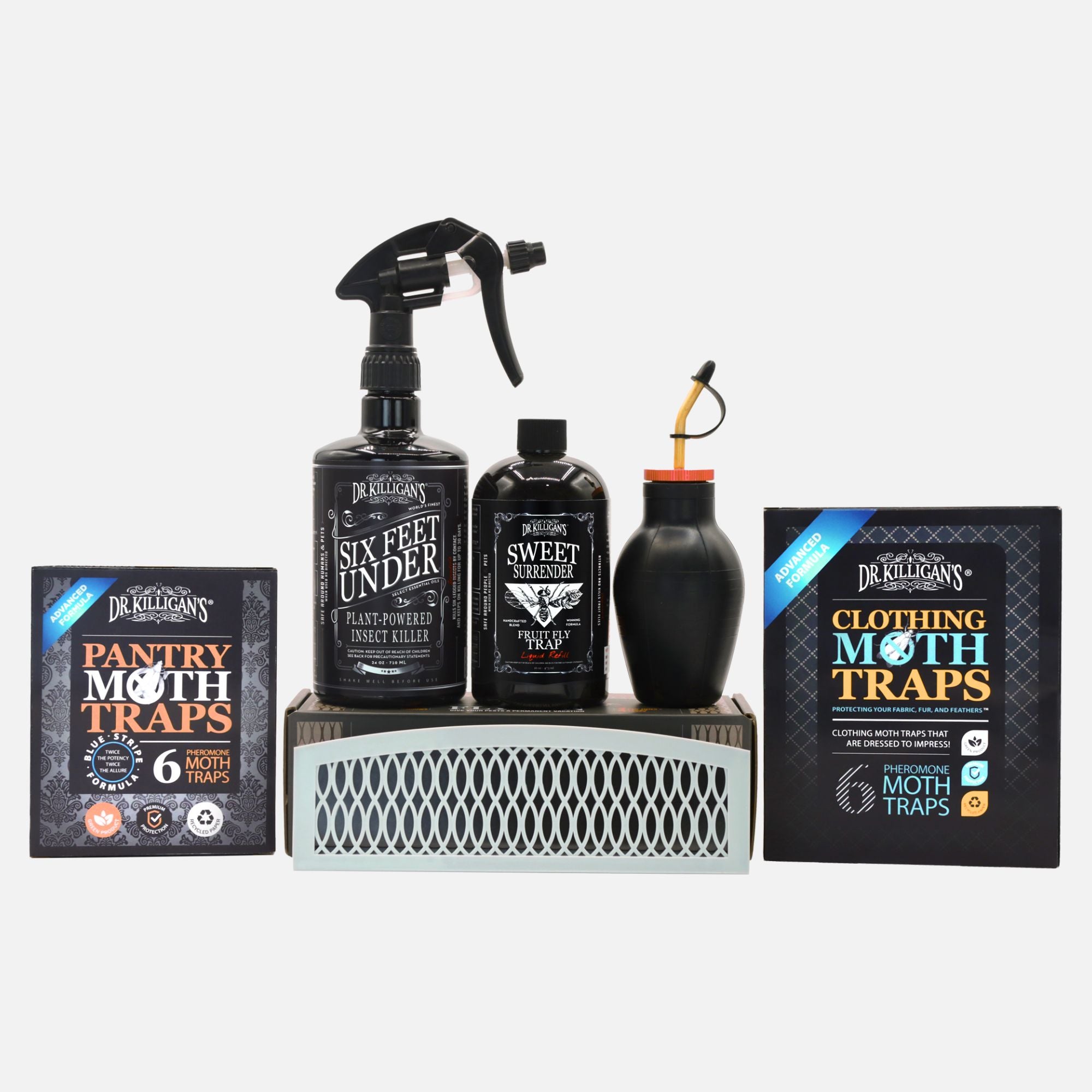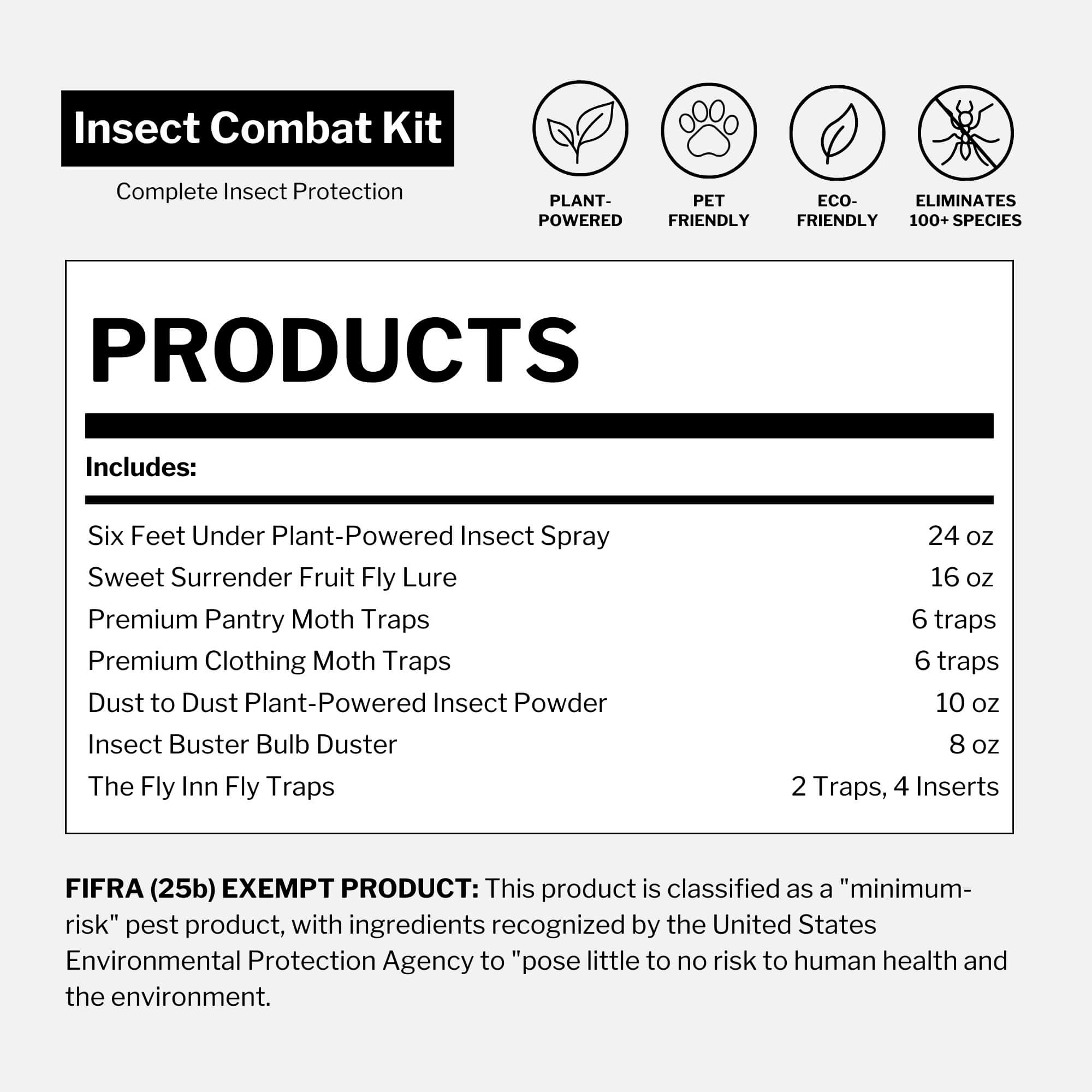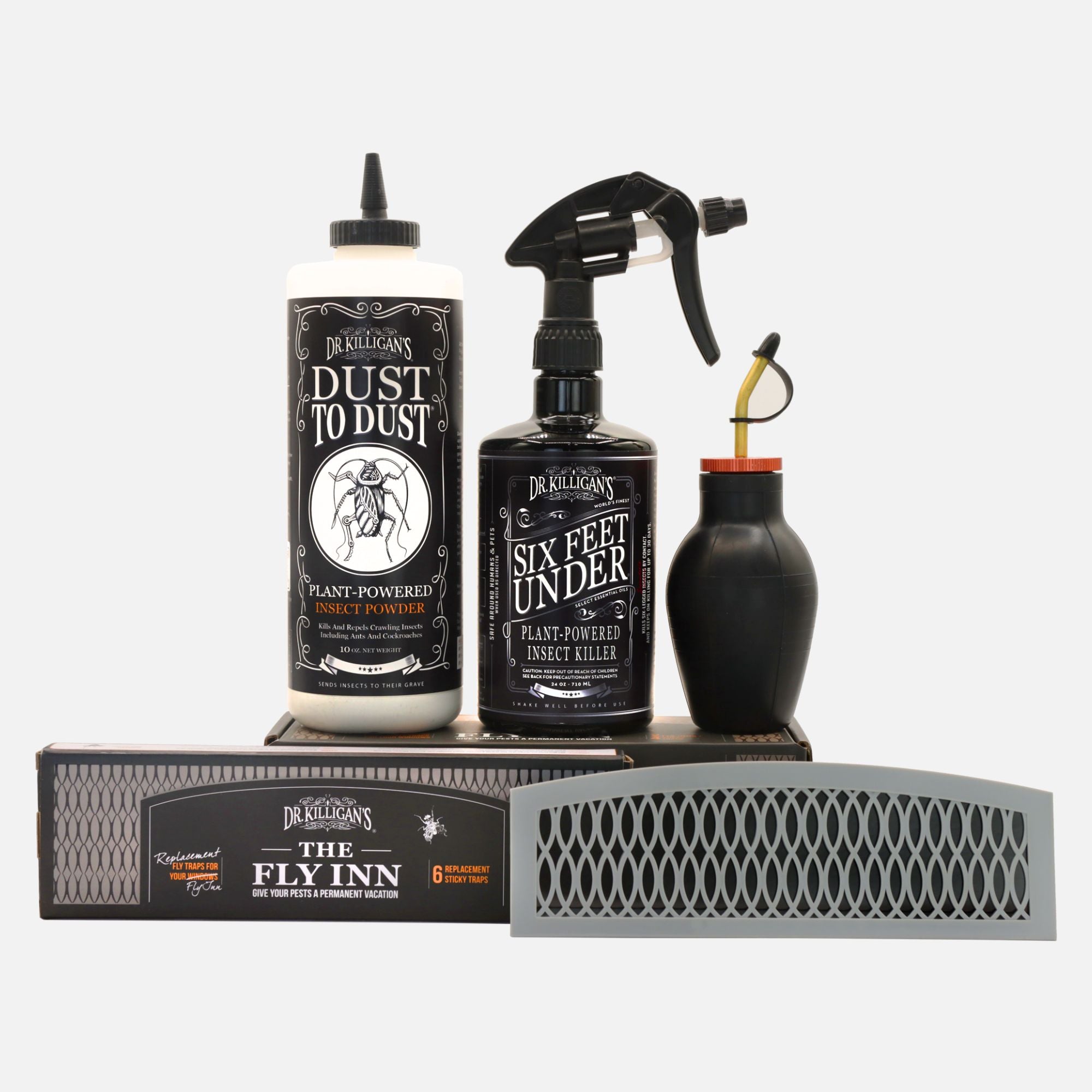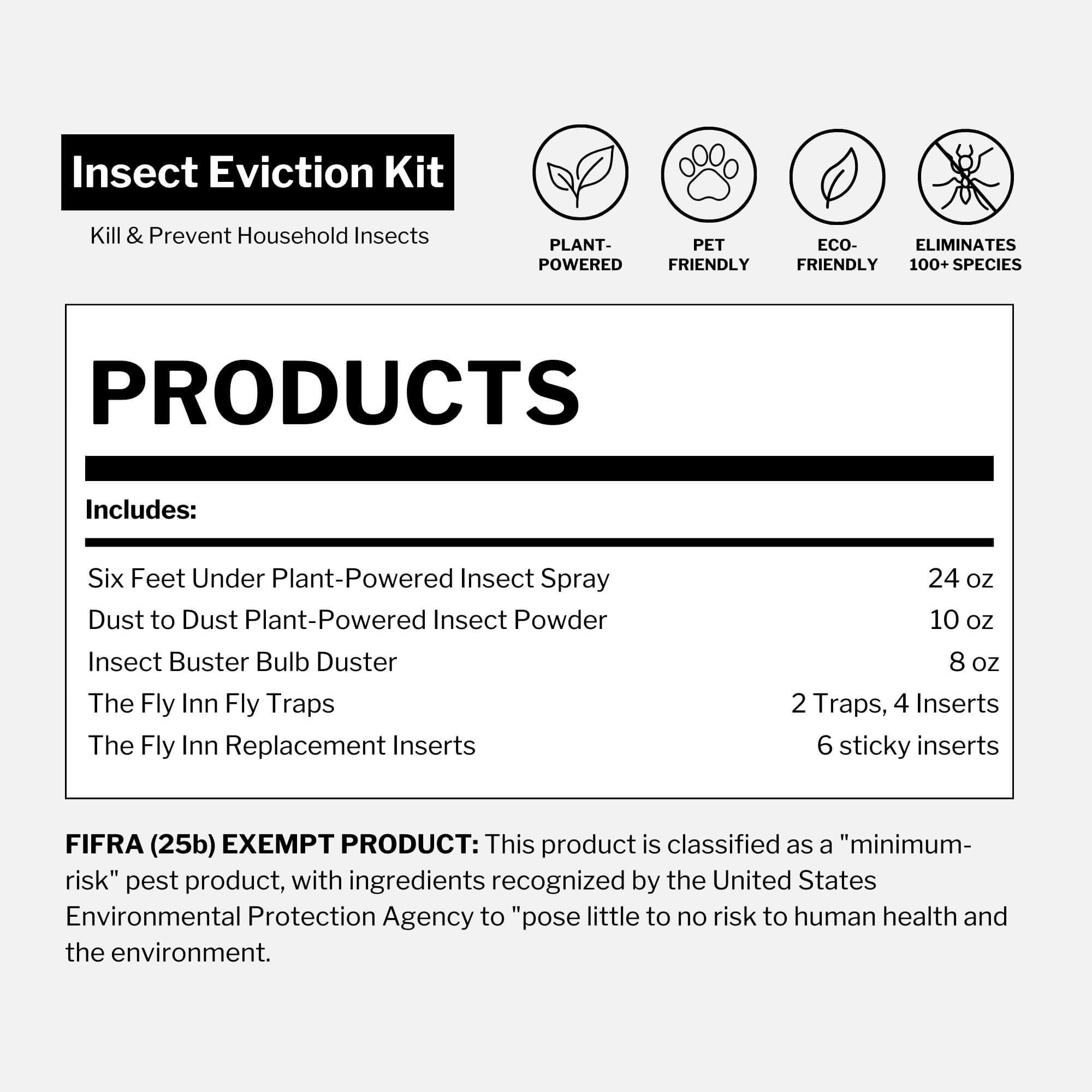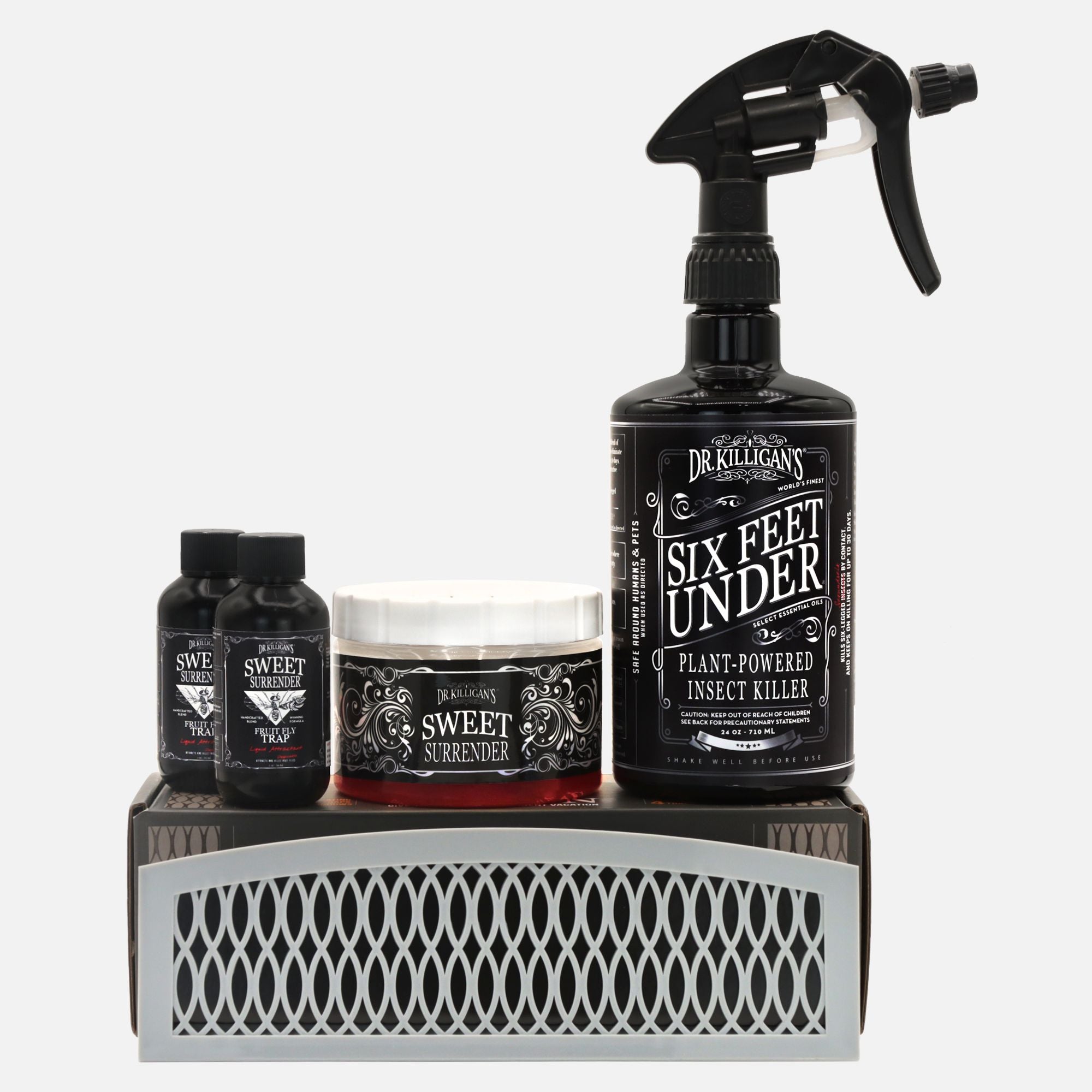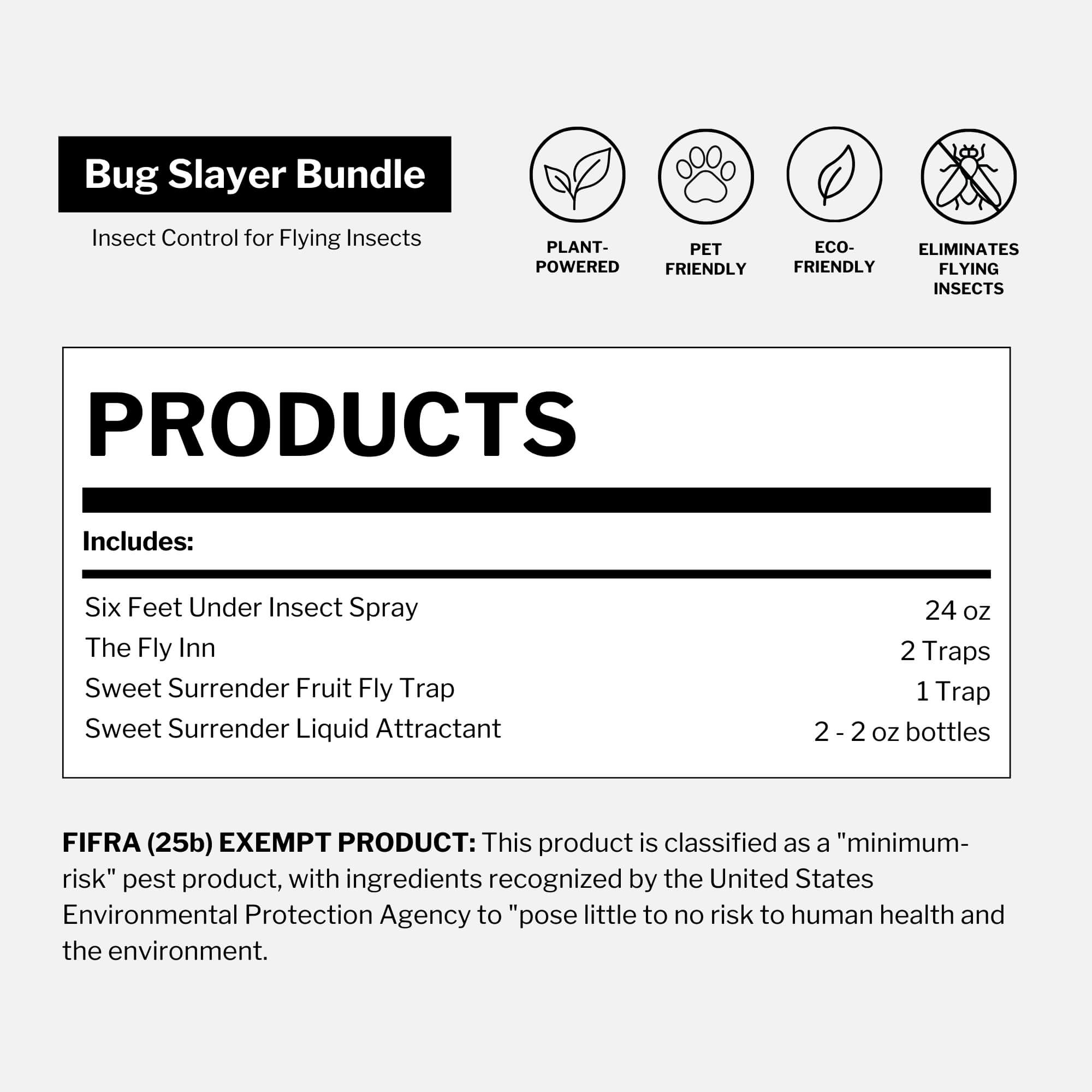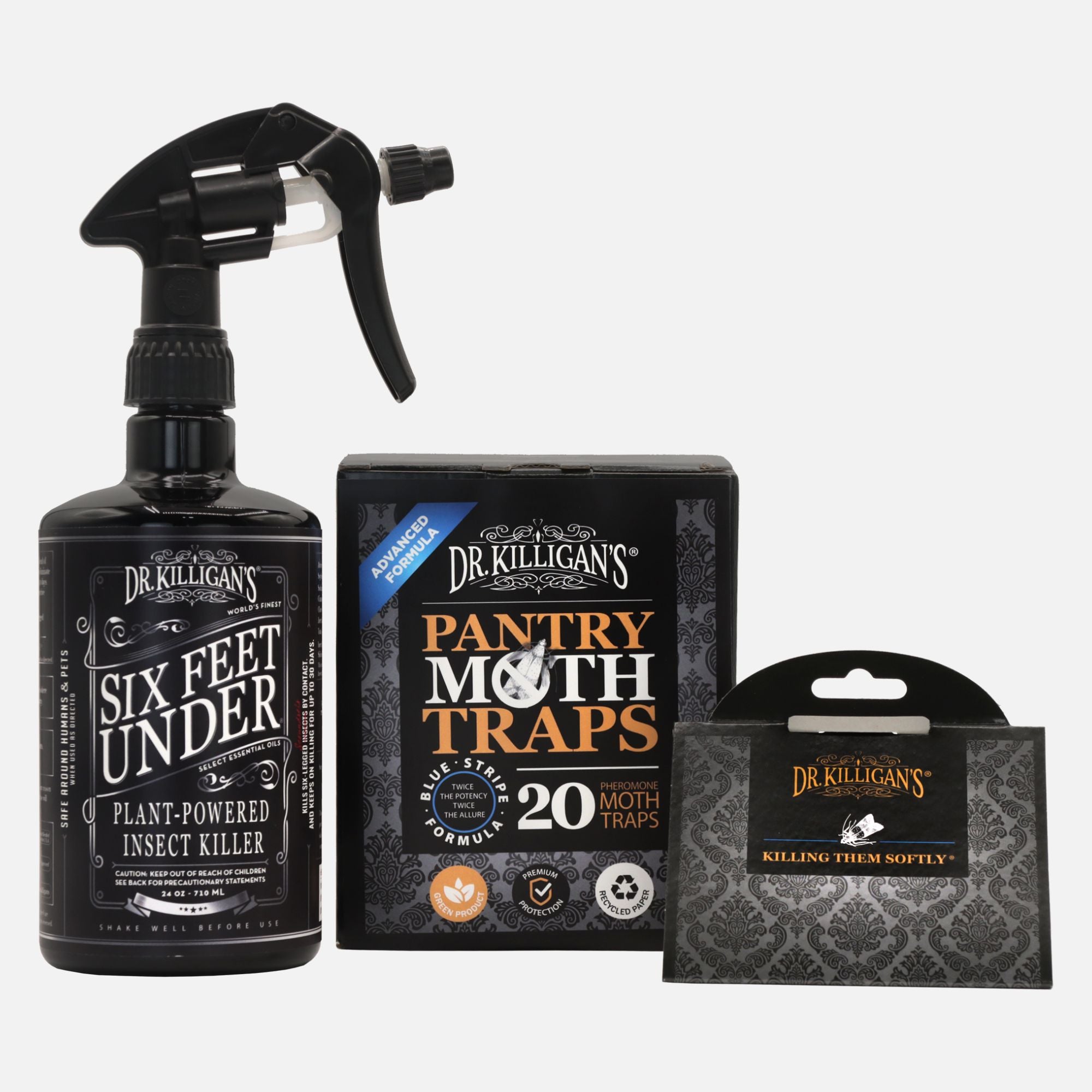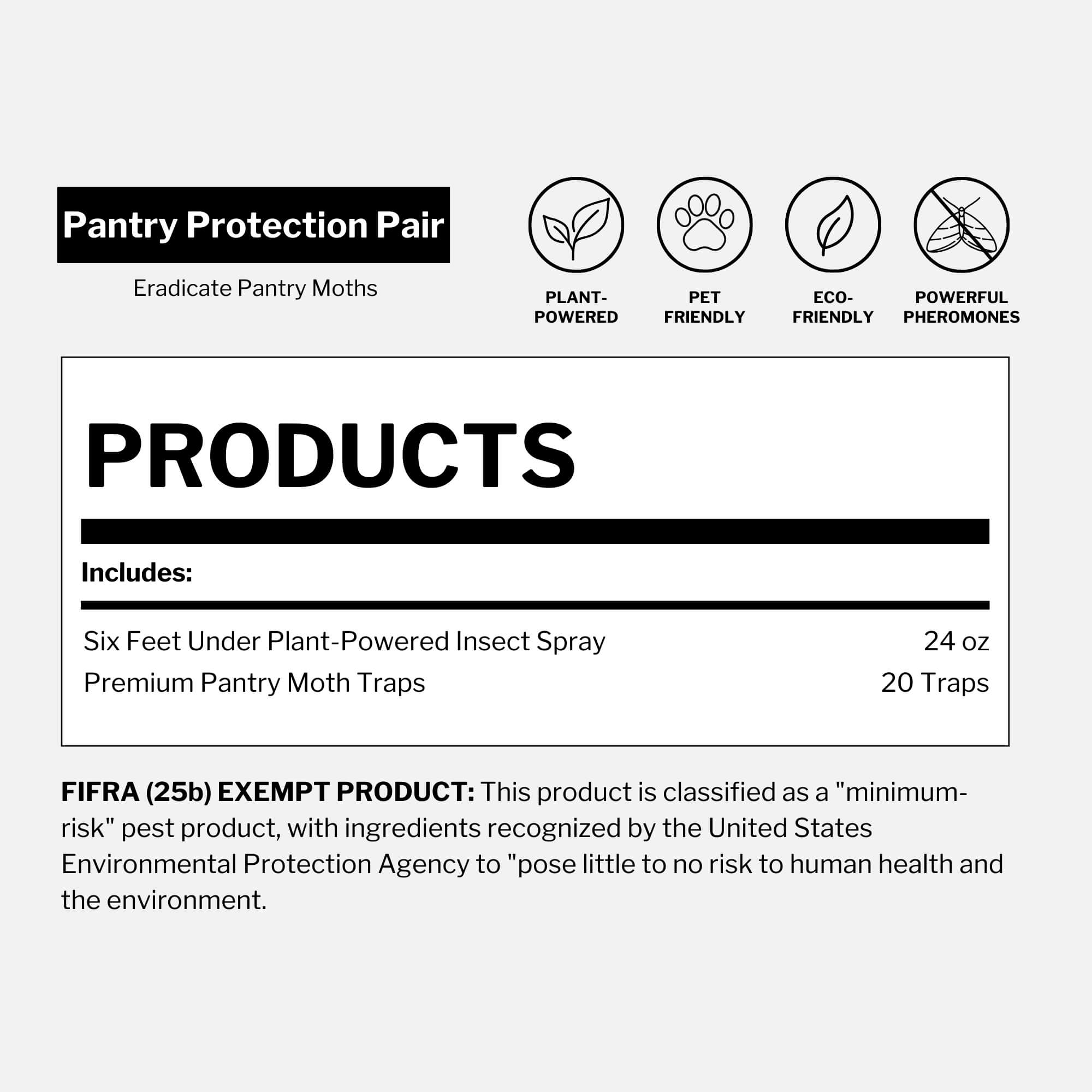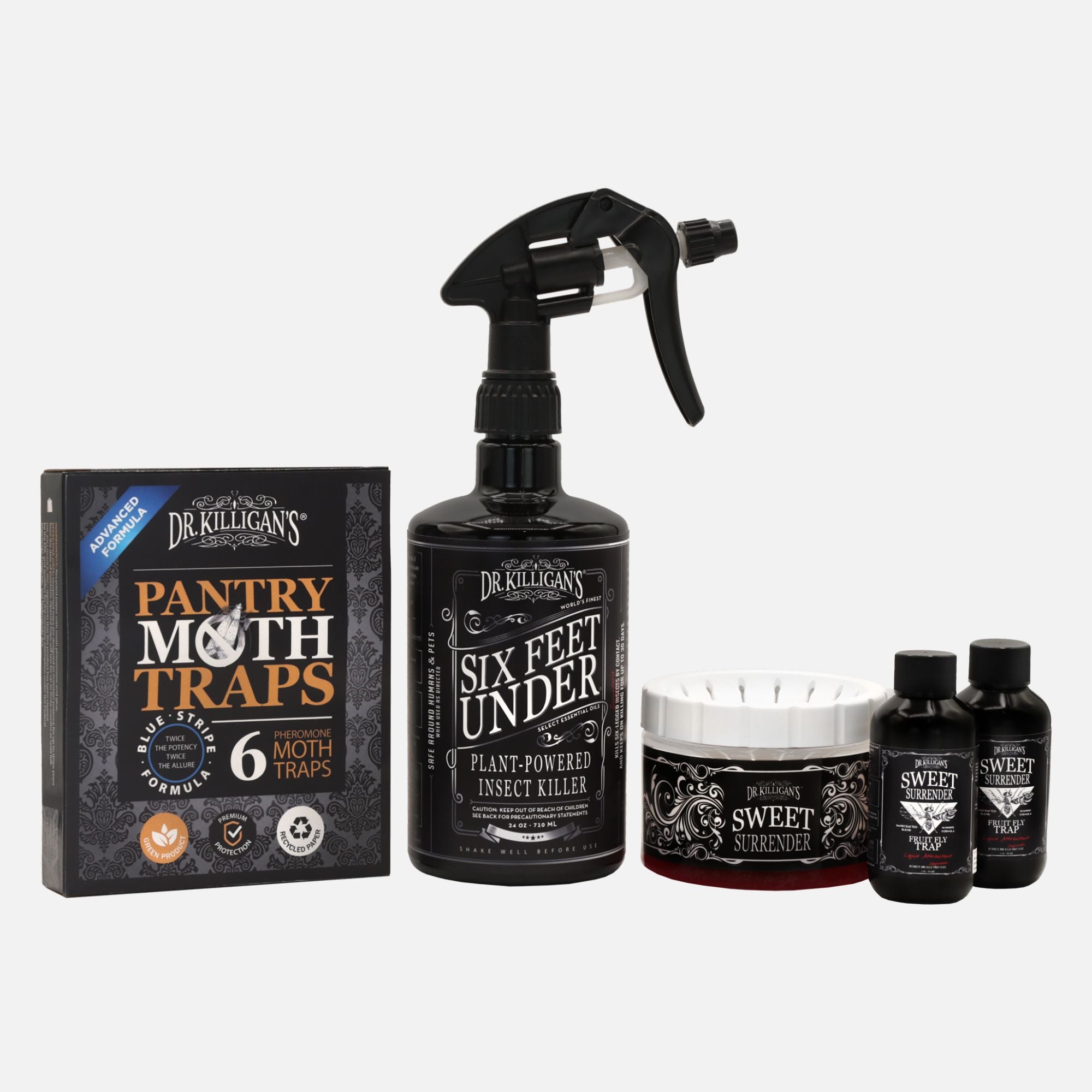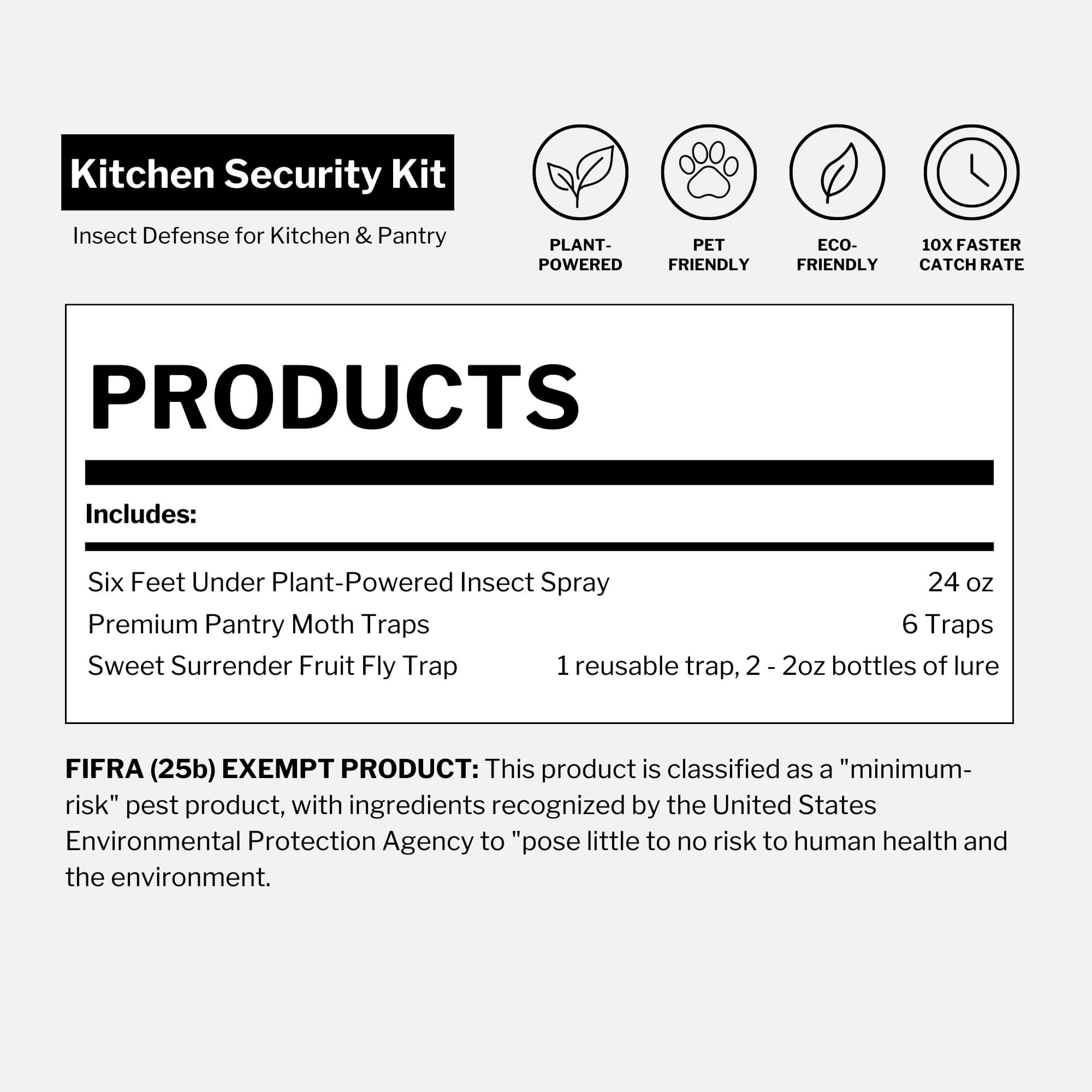Updated on August 8th, 2025
Finding moth damage but no clear source can be frustrating—and costly. Clothing moths can silently chew holes in wool, silk and cashmere, while pantry moths contaminate food with webbing, droppings and larvae. By the time you spot the signs, the infestation is often already well established.
Getting rid of moths when you can’t find the source isn’t just inconvenient—it’s a race against time. Moths hide in dark, undisturbed areas, laying eggs that can hatch weeks later, making complete eradication a challenging task.
In this guide, you’ll discover five proven steps to properly identify, eliminate and prevent moth infestations—before they cause further damage.
1. Identify the moth
The two most common species of moths that invade households are the clothing moth and the pantry moth. Here is a quick guide to distinguish between them:
Clothing moths (Tineola bisselliella and Tinea pellionella)
 Clothing Moth (Tineola bisselliella)
Clothing Moth (Tineola bisselliella)- Length: Smaller, at one-fourth inch long
- Color: Generally a uniform beige or buff color, with reddish-gold to coppery tufts of hair on their head
- Flight: Fluttery and weak, with a straight pattern
- Infest: Closets, drawers and other locations where keratin-rich items are kept
- Diet: Natural fibers, such as wool, silk and fur
Pantry moths (Plodia interpunctella)
 Pantry Moth (Plodia interpunctella)
Pantry Moth (Plodia interpunctella)- Length: Larger, at one-half inch long
- Color: Gray, brown and tan hued, with wings that are whitish-gray near the body and dark reddish brown near the tips
- Flight: Erratic and quick, with a zigzag pattern
- Infest: Pantries, cabinets and other locations where dry food is stored
- Diet: Grains, cereals, nuts, birdseed and other dried goods
After you’ve identified the type of moth, you must clean thoroughly to get rid of them.
2. Clean and throw away infested material
If you have clothing moths: First sort through all of your clothes, linens and fabrics and identify any items that are infested with moths. Look for visible signs of damage—such as holes or larvae casings. Remove all infested items from your home and place them in sealed plastic bags (in an outside trash can). If the items are washable, wash them in hot water and dry them on high heat to kill any remaining eggs or larvae. If the items cannot be washed, freeze them for at least 72 hours to kill any eggs or larvae.
If you have pantry moths: Meticulously examine and clean out your pantry. Throw away any infested food items. Look for signs of Indian meal moth infestation, such as webbing or larvae, and check all dry-food items such as flour, cereal, pasta and even pet food and birdseed.
Then, vacuum and vacuum again. Pay singular attention to areas where you found infested items, vacuuming carpets, upholstery and any cracks and crevices where moths may be hiding. Use the hose attachment as needed.
For clothing and pantry moths: Wipe down all surfaces—including walls, shelves, baseboards, dresser drawers and clothing rods—with a simple water and vinegar solution. Remove all clothing (from your drawers) and pantry items (from your pantry) to do so. Wiping down surfaces will deter moths from returning.
Follow up with Six Feet Under Plant-Powered Insect Spray, a kill-on-contact spray that will kill any remaining clothes or pantry moth eggs and larvae.
3. Set up moth traps

Moth traps are a crucial step. With their proprietary blend of double-potent pheromones and the stickiest trapping glue, our traps—pantry moth traps and clothing moth traps—work by luring adult male moths in. Once stuck, the male moths can no longer breed and their lifecycle comes to an abrupt halt.
So, while cleaning and discarding infested items are crucial, setting up moth traps is a key step in ensuring that your home remains moth-free.
Place traps where moths are most active—such as closets or pantry shelves. For expert tips on trap placement, read [Where do I place moth traps to get rid of moths].
4. Protect items from pests
Now that the moths are under control, you simply cannot relax—not yet. You must first safeguard your possessions from future invasions of unwanted guests.
For seasonal clothing, store items in airtight bags or boxes—vacuum-sealed bags work especially well. Keep them in a cool, dry area, ideally within the main living space of your home. Avoid storing clothes in hot or humid places like the attic or basement.
For pantry protection, opt for glass or hard plastic airtight storage containers to prevent pantry pests such as pantry moths and other miscreants—like ants and cockroaches—from getting in.
Tip: Remember to check your groceries for signs of infestations before bringing them home, as that's usually how pantry moths enter your home. Clothing moths typically get into houses through infested items—especially used clothing purchased secondhand or brought in from other locations.
5. Be proactive. Use moth repellents (not mothballs)
Pungent mothballs release toxic vapors. The chemicals they contain—namely naphthalene or paradichlorobenzene—are considered a health risk by many experts. In fact, California considers them carcinogens and the European Union banned them altogether (since 2008). In addition, mothballs may look like candy or other treats to small pets and children and could be ingested accidentally.

Instead, I recommend using Cedar Planks made from eastern red cedar wood, a natural moth repellent that is sustainably sourced from the USA. These planks provide a powerful natural defense against moths and can be used in closets, drawers, suitcases and vacuum-sealed bags to protect your belongings.
Note: If the source of the infestation remains elusive after cleaning and safeguarding, please contact us. Together, we'll address the problem effectively. You are clever and patient and persistent and can (and will) overcome these vermins.





